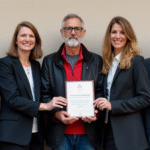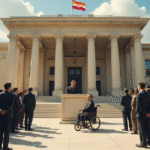Claudia Sheinbaum Announces Celebration of Mexica People’s Arrival
During the morning press conference, Mexico’s President Claudia Sheinbaum Pardo announced a series of events to celebrate the establishment of the Mexica people in the territory now known as Mexico City. The celebration, titled “Yólotl Anáhuac,” will take place in July to mark 700 years since the founding of ancient Tenochtitlan.
The Significance of the Date
Lorena Vázquez Vallin, an archaeologist from the Program of Urban Archaeology (PAU) at the National Institute of Anthropology and History (INAH), explained that historical sources mention several possible founding dates for Tenochtitlan. However, 1325 is widely accepted as the founding year due to its significance in the legend of the eagle perched on a cactus, symbolizing the promised land for the Mexica people. Despite other potential dates, 1325 is the most frequently cited in historical records.
Vázquez Vallin also highlighted that the Mexican presidency chose July 26 as the foundational date because it marks the second solar capital alignment with ancient Tenochtitlan, an important date within the tradition of central Mexico’s pre-Hispanic great cities.
Director General of INAH’s Remarks
Diego Prieto Hernández, the General Director of INAH, emphasized that 2025 is a year for celebration by both the Mexican government and the city government, as well as all Mexicans. He expressed pride in having such a significant city that is currently experiencing exciting and promising transformational moments.
The Commemorative Program
On July 26, a grand event will take place at the Zócalo in Mexico City, where a monument will be unveiled at the northeast corner of the central plaza. This monument symbolizes seven centuries of Mexico-Tenochtitlan’s identity and grandeur, honoring five Mexica women and ten rulers (tlatoanis).
Alongside the monument, various activities will be held to celebrate the end of the Mexica people’s journey from Aztlan in search of their promised land. These include:
- Transforming the original perimeter of ancient Tenochtitlan into a 23-kilometer symbolic trail with lighting, borders, murals, and public art.
- Memoria Luminosa. México-Tenochtitlan 700 años: A videomapping spectacle projecting from July 11 to 27 on the facades of the Palacio Nacional and the Metropolitan Cathedral, narrating the origins, development, and transformation of Mexico City.
- Five monumental sculptures representing Mexica cosmogony, including the Piedra del Sol, Teocalli de la Guerra Sagrada, and figures of Coatlicue, Coyolxauhqui, and Tlaltecuhtli.
- The film opera “Cuauhtémoc,” featuring soprano Wendy in a Nahuatl performance, depicting the heroic defense of Tenochtitlan led by the last tlatoani.
- The public art exhibition “La nopalera en el corazón,” consisting of 50 intervened nopal sculptures by artists and collectives, currently displayed on Paseo de la Reforma and expected to grow to 250 pieces by January 2026.
- Distribution of the coloring book “Códice Tenochtitlan: asentamiento mexica” in all public primary schools, focusing on the Mexica people’s migration through didactic illustrations.
- The immersive exhibition “Códice Cósmico de México-Tenochtitlan” at the Yancuic Museum, designed for children, young audiences, and general public.
- Invitation to the ceremony “México-Tenochtitlan: siete siglos de legado de grandeza,” led by President Claudia Sheinbaum, featuring 3,500 dancers from the Pilares y las Utopías portraying the ancestral Mexica migration from Cincalco’s cave in Chapultepec to the Zócalo.
- A staged production by the Secretariat of Defense with over 800 actors recreating significant moments in Tenochtitlan’s history, consisting of four acts lasting 31 minutes.
Key Questions and Answers
- Q: Who announced the commemoration events?
- Q: What is the significance of the chosen founding date, July 26?
- Q: What activities are part of the “Yólotl Anáhuac” celebration?
A: Mexico’s President Claudia Sheinbaum Pardo announced the events during a morning press conference.
A: July 26 marks the second solar capital alignment with ancient Tenochtitlan, an important date within the tradition of central Mexico’s pre-Hispanic great cities.
A: The celebration includes a symbolic trail, videomapping spectacle, film opera, public art exhibitions, educational programs, and a staged production recreating Tenochtitlan’s history.






